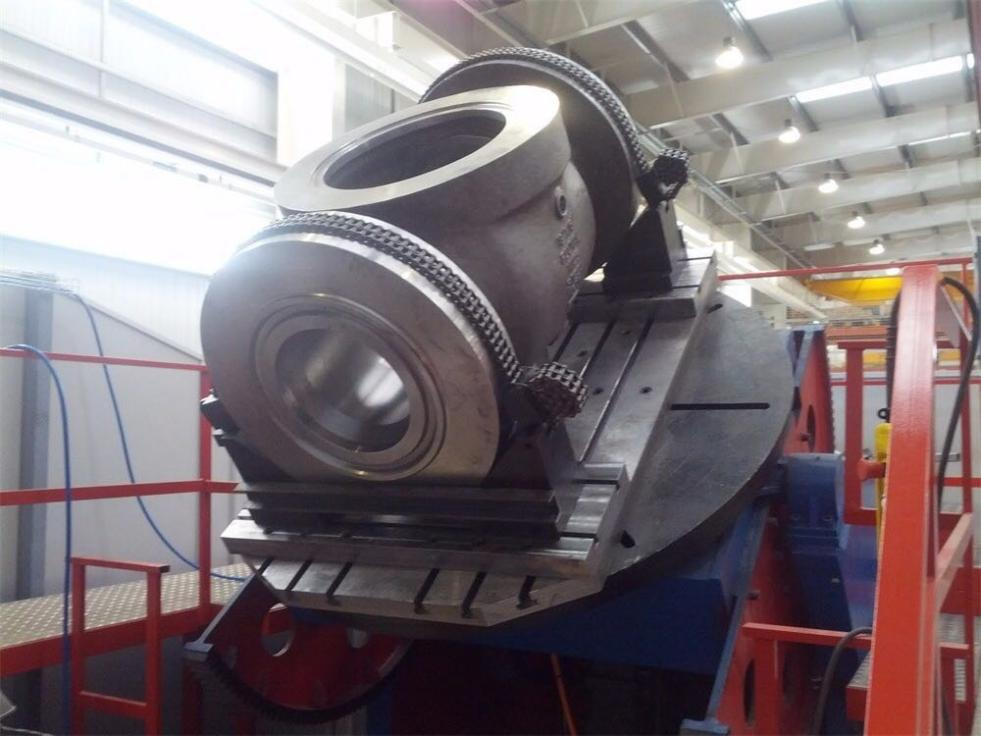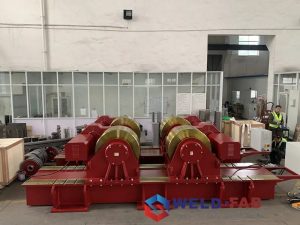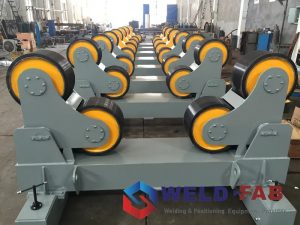The Welding Positioner Used In End Heads And Customized Workpiece Handling
In various manufacturing industries, the common parts used for cylinders, equipment, and containers, in addition to flanges and elbows, there are also isolating components used to seal containers– End heads.
End head refers to the element used to close the end of the container to isolate the internal and external media, also known as end caps. The end head of a cylindrical container is generally a revolving shell. According to the shape of the head surface, it can be divided into convex shape, cone shape, flat shape and combined shape. Convex heads refer to heads whose outer surface is convex, such as hemispherical, elliptical, dish-shaped and spherical heads without folding edges. Some gas cylinders use a combined bottom head with a convex surface inward, which can not only ensure the strength, but also meet the end needs of safe use.
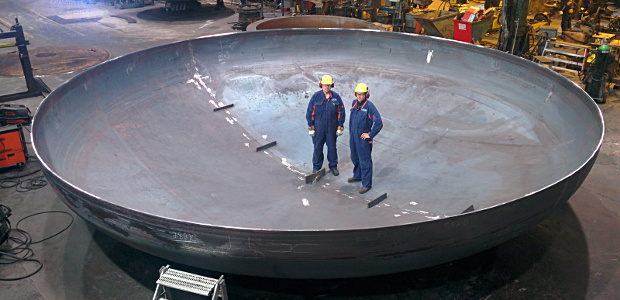
The end head is an indispensable and important part of pressure vessel equipment in many industries from petrochemical, atomic energy to food and pharmaceuticals.
It is the end cap on the pressure vessel and a main pressure-bearing part of the pressure vessel. The role played is the sealing effect.
First, the upper and lower bottoms of the tank-shaped pressure vessel are made, and the second is that the pipe is at the end and is not going to extend forward. Then a head is used to seal the pipe in the form of welding. There are blind plates and caps that are similar to the functions of the end head, but those two products can be disassembled. After the end head is welded, it cannot be disassembled. The matching pipe fittings include pressure vessels, pipes, flanges, elbows, tees, crosses and other products.
As a part of the container, the end head is connected to the cylinder by welding. According to the different geometric shapes, it can be divided into spherical, elliptical, dish, spherical crown, cone shell and flat cover. Among them, spherical, elliptical, dish and spherical crown heads are collectively called convex end heads.
In welding, it is divided into butt welding head and socket welding head. Used in various container equipment, such as storage tanks, heat exchangers, towers, reactors, boilers and separation equipment, etc.
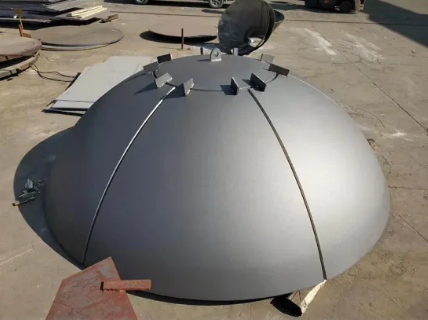
The materials of the end head include carbon steel, stainless steel, alloy steel, aluminum, titanium, copper, nickel and nickel alloys.
Application range of stainless steel end head: petroleum, electronics, heating, chemical, pharmaceutical, sewage treatment, textile, food, machinery, construction, nuclear power, aerospace, pressure vessel, military and other industries.
In terms of production technology, the hemispherical end head is mainly made of round blanks, which are pressed into a hemispherical shape and then forged at low temperature. Because the hemispherical end head is forged at low temperature, the size change is relatively small, and the formation of oxide scale is also small, and there is no decarburization phenomenon on the surface.
As an indispensable part of pressure vessel equipment in petrochemical, atomic energy, food and pharmaceutical industries, the processing technology of the head is still improving.
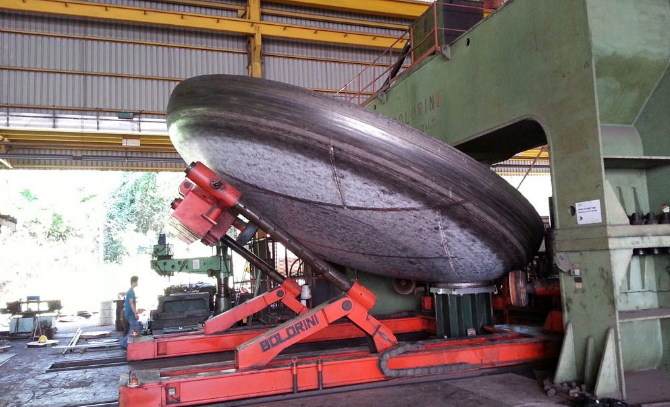
The quality of the end head is directly related to the long-term safe and reliable operation of the pressure vessel. Therefore, the welding of the end head is more important.
1. Tailor welding before forming: To ensure welding quality, radiographic inspection should be carried out. Before punching, the interior is polished to be flush with the base material. Radiographic inspection after forming.
- Tailor welding after split forming: Guarantee welding quality and radiographic inspection.
The end heads are mostly used in some heavy industry equipment, so welding is very important for the heads, so the welding technology is quite important when welding the end heads.
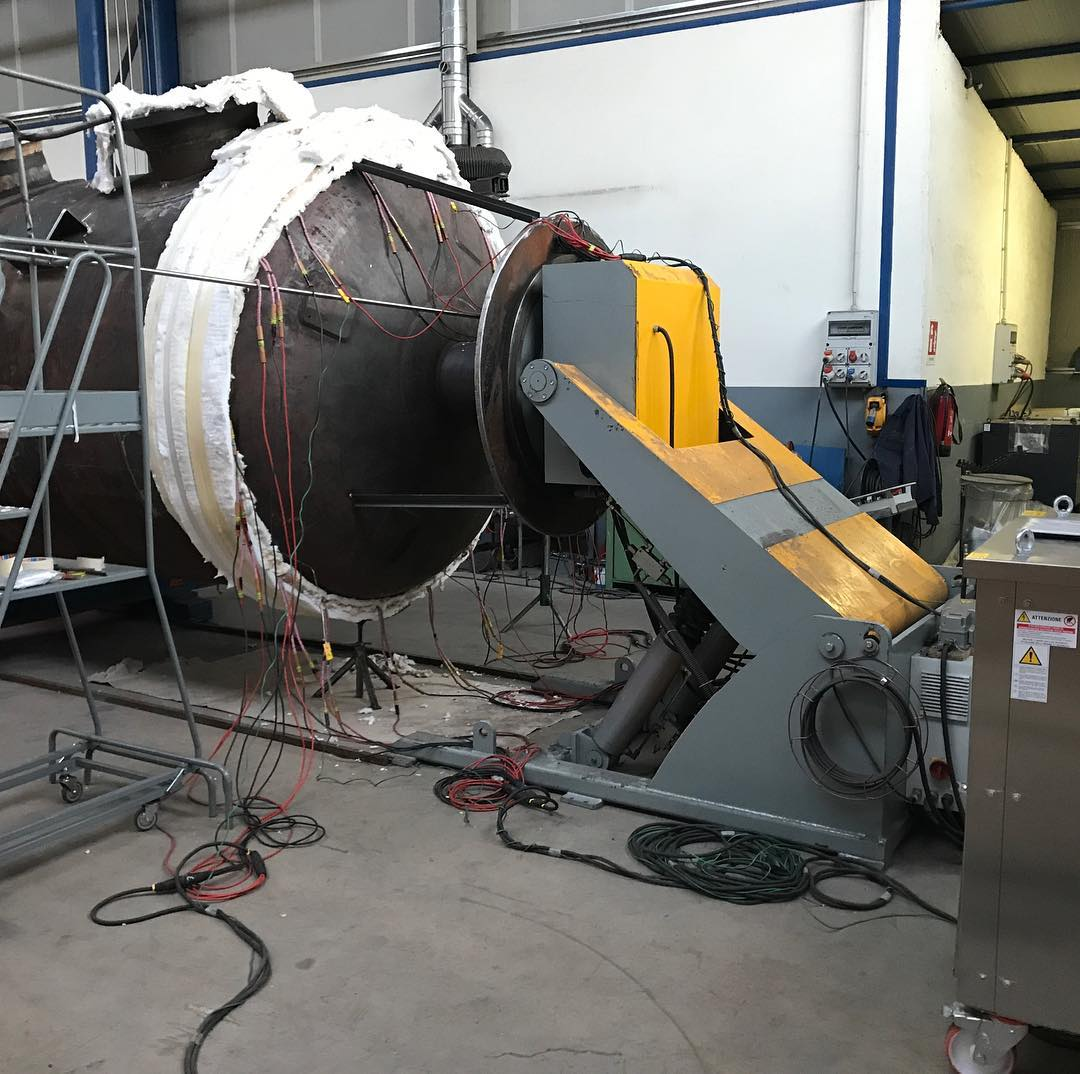
The end head welding method usually adopts manual arc welding or automatic welding.
Manual arc welding is suitable for welding of various irregular shapes and various welding positions. Manual arc welding is to select welding process parameters mainly according to the thickness of the weldment, the form of the breach, and the position of the weld. Under the premise of ensuring the welding quality, large-diameter electrodes and high-current welding should be used as much as possible to improve production efficiency.
The automatic welding method is submerged arc automatic welding, electroslag welding, CO2 gas shielded welding and so on.
Automatic submerged arc welding has a high deposition rate. The advantages of large melting depth and mechanical automation operation are suitable for the manufacture of large welding structures and are widely used. They are mostly used in flat welding and flat fillet welding positions. The electroslag welding seam and heat-affected zone are overheated, and the crystal grains are coarsened. Heat treatment should be carried out after welding.
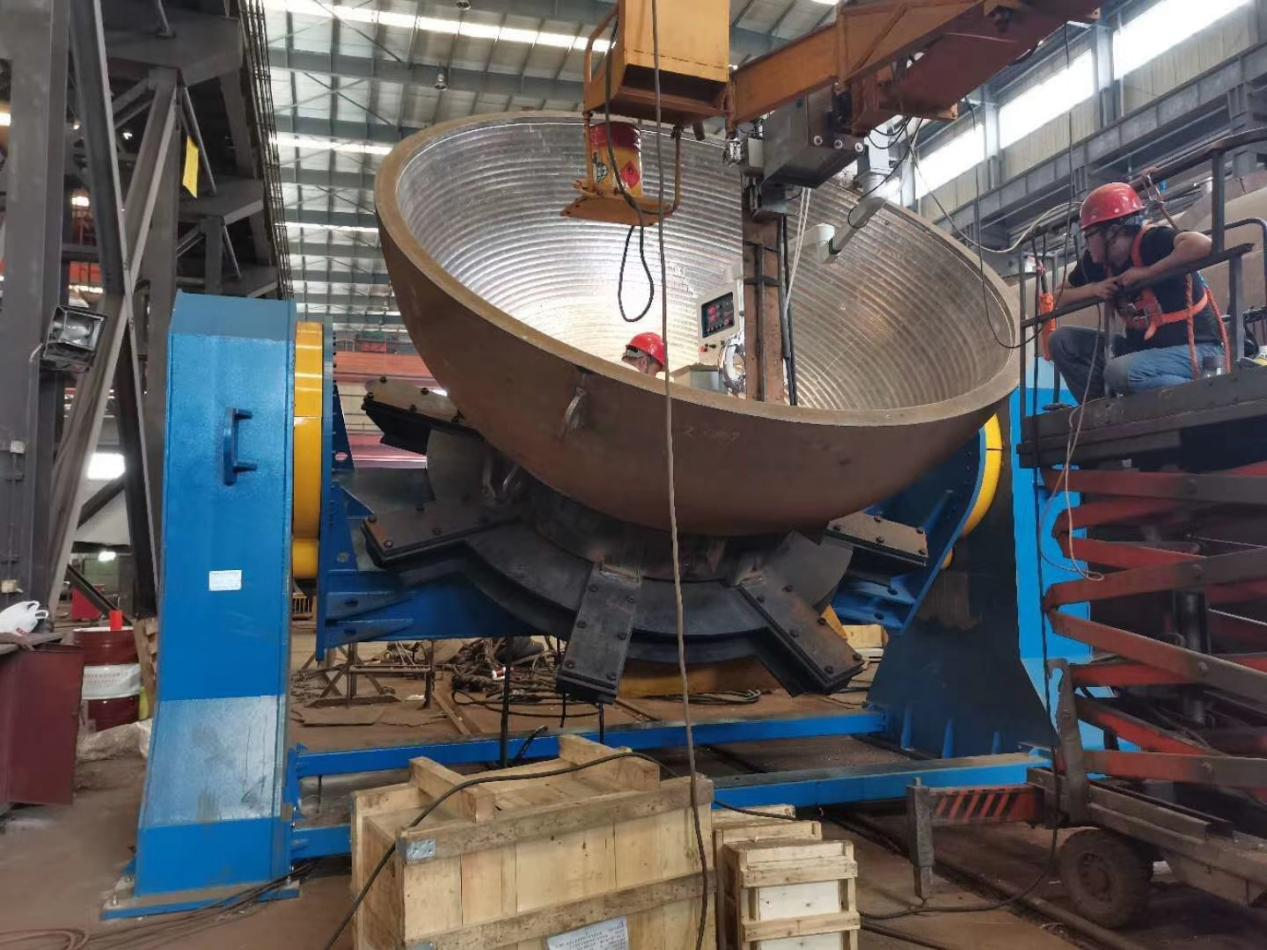
When the end head and the cylinder of the container are connected by welding, the manual welding operation is more difficult due to the special shape of the end head and the heavy weight of the workpiece. Therefore, the end head is usually positioned with the help of a welding positioner.
Use the chuck to fix the end head on the table of the welding positioner, mount the cylinder on the bracket, adjust the inclination angle of the bracket and the operating machine table, make sure that the end head and the cylinder are on the same horizontal line. In this way, it can be ensured that the welds are aligned and there is no deviation.
For some larger special heads, weld-fab can customize a specific welding positioner to fit the workpiece. With a customized chuck, it can easily handle the welding of heavy workpieces.
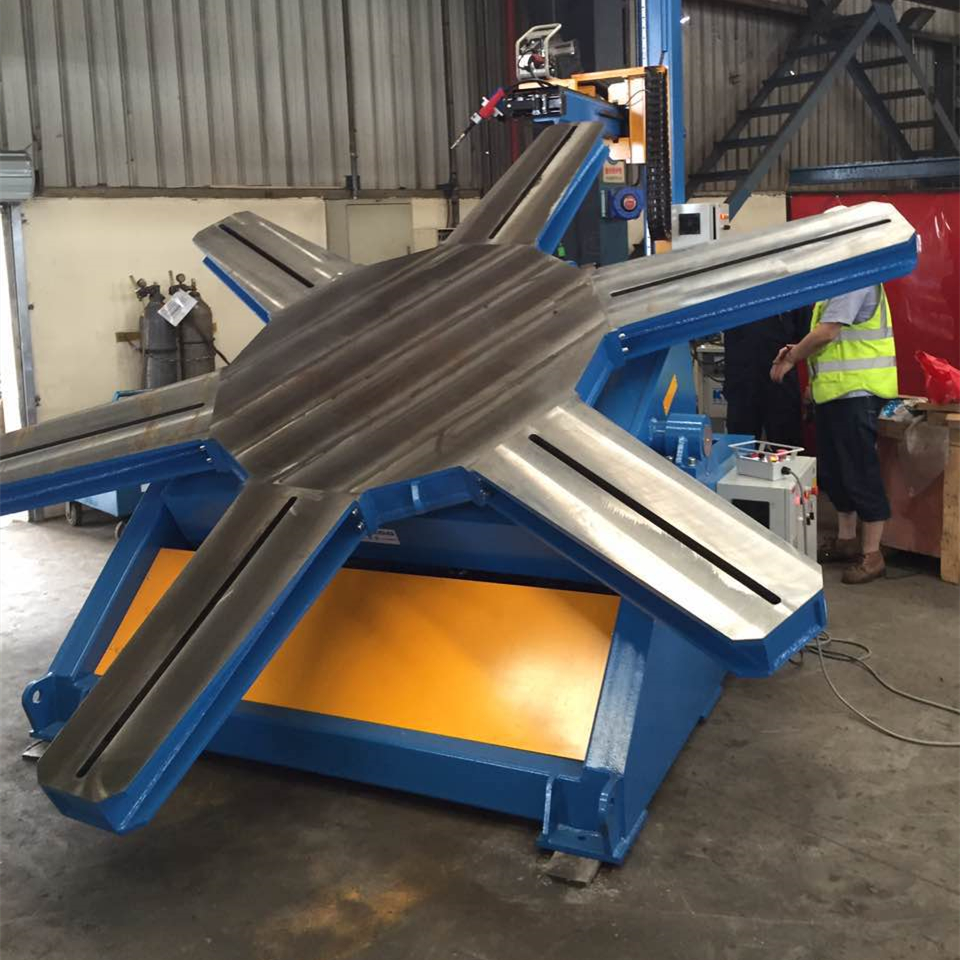
By operating the hand control box, the table can be rotated to adjust the angle of the welding positioner, without the need to lift the head manually, and the operation is very convenient. After positioning in a suitable welding position, it is also convenient for welders to weld.
For some containers that need to be welded on both ends, if you want to improve the welding efficiency, you can also use our head-to-tail welding positioner to position the workpiece. The bracket is used to support the cylinder in the middle, and the heads are fixed on both sides of the head and tail welding positioner at both ends. The straight line distance and height can be adjusted to easily reach the ideal welding position.
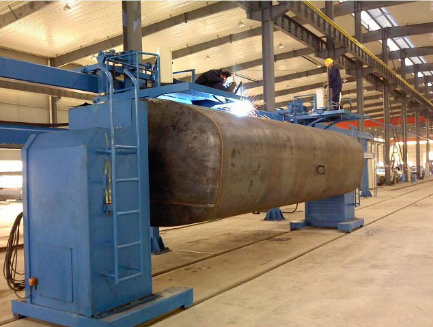
In addition to the end head, in the production process, customers often encounter welding problems for some special workpieces. The irregular shape and weight of the workpiece cause many inconveniences for the welder in the welding process. When encountering such customized special parts, the positioner is also a good choice.
The table surface of the welding positioner can be customized with T-slots according to the condition of the workpiece to fix the chuck. Different types of chucks can be applied to workpieces of different sizes. The chuck is used to clamp the workpiece and fix it on the worktable of the welding positioner. The manipulating hand control box can adjust the angle, rotation and flip of the welding positioner, so that the workpiece can reach the ideal position, which is convenient for welding operations.
According to different welding methods and welding requirements, there are many types of welding positioners to choose from. Weld-Fab can provide fixed welding positioners, lifting welding positioners, hydraulic weldng positioners, L-shaped welding positioners, head and tailstock welding positioners, welding turntables, customized welding positioners, etc.
